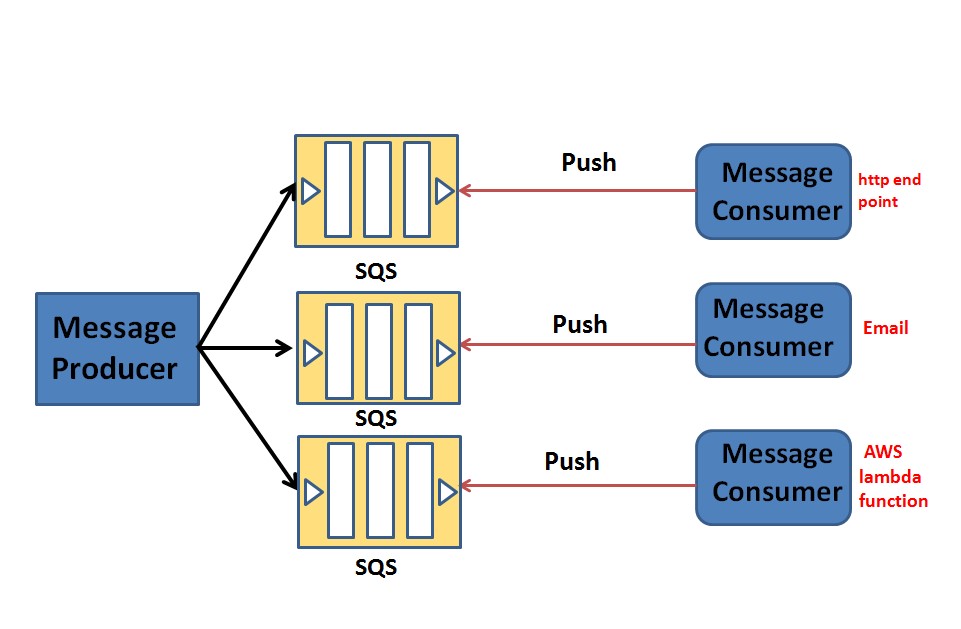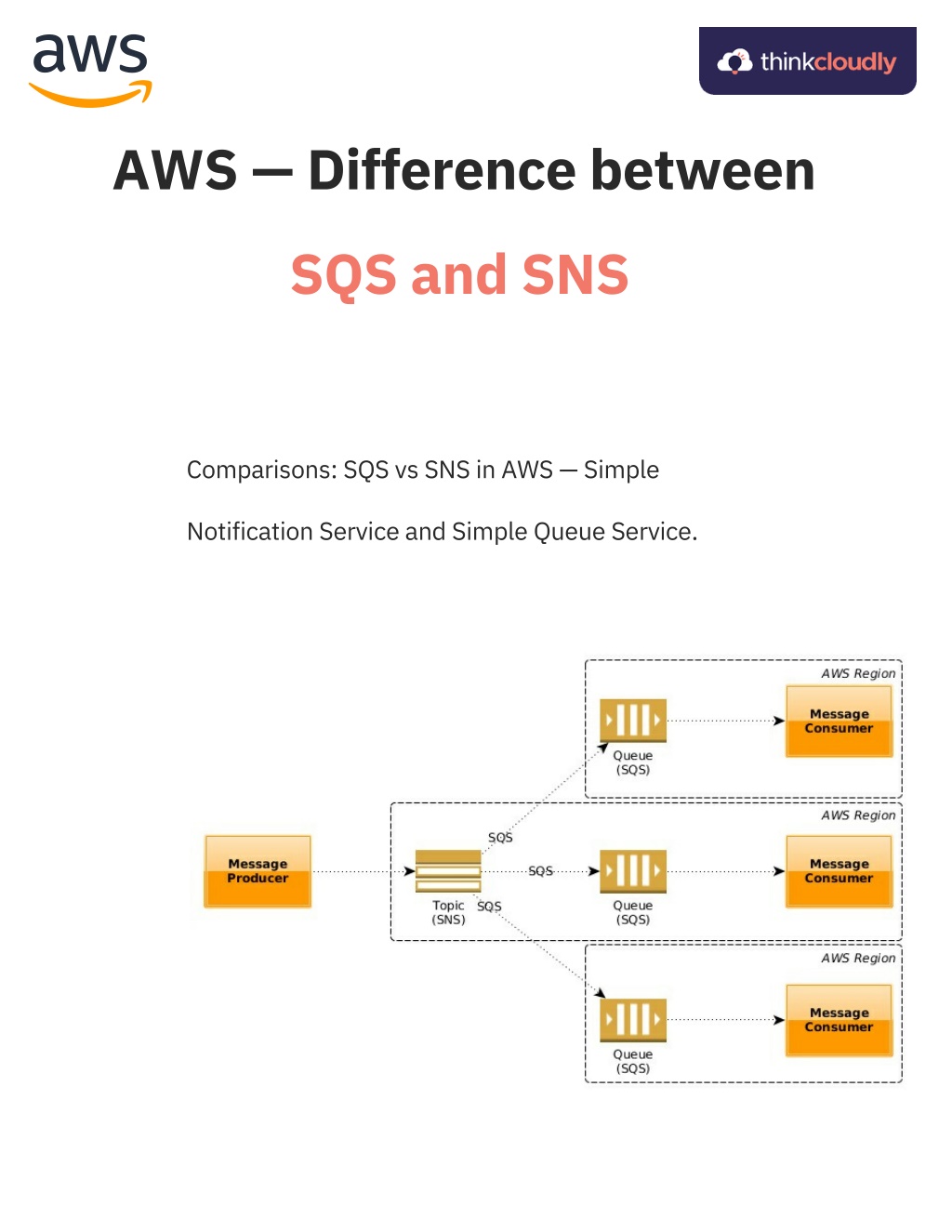Understanding Message Queuing Services: An Overview of SQS
Message queuing services play a crucial role in modern distributed systems, enabling asynchronous communication between different components. Amazon Simple Queue Service (SQS) is a fully managed message queuing service that enables developers to decouple and scale microservices, distributed systems, and serverless applications. SQS offers a reliable and secure platform for sending, storing, and receiving messages.
SQS is designed to provide high availability and flexibility, allowing users to create and manage multiple queues, each with its unique set of attributes. With SQS, you can leverage features like dead-letter queues for handling failed message processing, long polling for reducing the number of requests, and message visibility timeout to prevent message loss. These features make SQS an ideal choice for building scalable and resilient systems.
Delving into Notification Services: A Close Look at SNS
Amazon Simple Notification Service (SNS) is a fully managed messaging service that enables developers to decouple microservices, distributed systems, and serverless applications using a publish-subscribe model. SNS allows applications to send messages or notifications to multiple subscribers, including email, SMS, mobile apps, and other AWS services like AWS Lambda or Amazon SQS.
SNS supports both FIFO (First-In-First-Out) and standard queues, ensuring that messages are processed in the correct order when required. With SNS, you can also leverage features like message filtering, which enables subscribers to receive only the messages they’re interested in, and topic policies, which allow you to manage access to your topics and messages securely.
SQS vs SNS: Key Differences and Use Cases
SQS and SNS serve different purposes and have distinct message handling and delivery mechanisms. SQS is a message queuing service designed for asynchronous communication between services, ensuring messages are delivered in the correct order and stored until processed. SNS, on the other hand, is a notification service that uses a publish-subscribe model, enabling messages to be sent to multiple subscribers simultaneously.
When comparing SQS vs SNS, consider the following key differences and use cases:
- Message Handling: SQS is ideal for handling individual messages, ensuring they are processed in the correct order and stored until consumed. SNS is designed for broadcasting messages to multiple subscribers, making it suitable for event-driven architectures and fan-out scenarios.
- Delivery Mechanisms: SQS uses pull-based delivery, where consumers actively request messages from the queue. SNS employs push-based delivery, sending messages directly to subscribers when they’re published.
- Use Cases: SQS is well-suited for applications requiring reliable message processing, such as order processing, inventory management, and task distribution. SNS is ideal for applications requiring real-time notifications, like sending SMS alerts, email updates, or triggering AWS Lambda functions.
How to Choose Between SQS and SNS: Factors to Consider
Deciding between SQS and SNS depends on various factors, including message volume, delivery speed, and system architecture. Here are some aspects to consider when making an informed decision:
- Message Volume: If you expect high message volumes and need to process messages sequentially, SQS is the better choice. However, if you need to broadcast messages to multiple subscribers, SNS is more suitable.
- Delivery Speed: SNS offers faster delivery since it uses a push-based model, while SQS has a pull-based model, which might introduce some delay in message retrieval.
- System Architecture: Consider the overall design of your system. If you require asynchronous communication between services with guaranteed message ordering, SQS is the preferred option. For event-driven architectures and fan-out scenarios, SNS is more appropriate.
- Cost: Evaluate the cost implications of using SQS vs SNS, as pricing models differ between the two services.
Real-World Applications: Success Stories with SQS and SNS
Numerous businesses have effectively utilized SQS and SNS to streamline their processes and enhance system performance. Here are a few success stories:
Case Study 1: E-commerce Giant Improves Order Processing with SQS
A leading e-commerce company leveraged SQS to manage their high-volume order processing system. By implementing SQS, they were able to decouple their services, ensuring reliable message processing and improving overall system resilience.
Case Study 2: Media Company Simplifies Notifications with SNS
A media company used SNS to simplify their notification system, enabling real-time alerts for users across various channels, including email, SMS, and mobile apps. As a result, they improved user engagement and satisfaction.
Case Study 3: Gaming Platform Achieves Scalability with SQS and SNS
A popular gaming platform integrated both SQS and SNS to achieve scalability and high availability. By using SQS for asynchronous communication and SNS for real-time notifications, they managed to handle millions of concurrent users with ease.
Best Practices for Implementing SQS and SNS in Your System
Implementing SQS and SNS in your system can yield significant benefits when done correctly. Here are some best practices to consider:
- Security Measures: Implement proper security measures, such as Identity and Access Management (IAM) policies, to control access to SQS and SNS resources. Use encryption for sensitive data and leverage AWS CloudTrail and AWS CloudWatch for monitoring and logging activities.
- Monitoring Strategies: Set up monitoring and alerting mechanisms to track the performance and health of your SQS and SNS resources. Utilize AWS CloudWatch metrics and alarms to monitor message processing, queue depth, and subscription status.
- Scalability Considerations: Design your system to handle scale by implementing auto-scaling groups for SQS and SNS consumers. This ensures that your system can handle increased message volumes and maintain high availability.
- Dead-Letter Queues: Implement dead-letter queues for SQS to handle message processing failures. This strategy allows you to isolate problematic messages and analyze them separately, improving overall system resilience.
- Data Consistency: Ensure data consistency across your system by implementing idempotent message processing. This technique prevents duplicate processing when dealing with message redelivery or duplicate messages in SQS queues.
Navigating Challenges: Common Issues and Troubleshooting Tips
When working with SQS and SNS, you may encounter several challenges. Here are some common issues and troubleshooting tips to help you overcome these obstacles:
- Message Visibility Timeout: If a consumer fails to process a message within the message visibility timeout, the message becomes visible to other consumers, potentially leading to duplicate processing. To address this, fine-tune the message visibility timeout based on your consumer processing time.
- Message Ordering: SQS does not guarantee message ordering in distributed systems. If you require strict message ordering, consider implementing a single consumer or using FIFO queues. Additionally, ensure that your message producer and consumer are designed to handle ordered messages correctly.
- Dead-Letter Queue Configuration: Improperly configuring dead-letter queues may result in messages not being processed or moved to the dead-letter queue. Double-check your dead-letter queue configuration and ensure that your message producer and consumer are correctly handling messages from the dead-letter queue.
- Notification Subscription Filtering: If you’re using SNS topic subscription filtering, ensure that your filter policies are correctly defined. Incorrect filter policies may result in missed or unnecessary notifications.
The Future of Message Queuing and Notification Services: SQS and SNS Evolution
As technology advances, message queuing and notification services continue to evolve, offering new possibilities for system design and development. Amazon SQS and SNS are no exception, with ongoing improvements and updates that enhance their capabilities and performance.
One notable trend is the integration of machine learning and artificial intelligence into message queuing and notification services. These advancements can help improve message routing, filtering, and processing, leading to more efficient and intelligent systems.
Moreover, the growing adoption of serverless architectures and microservices has increased the demand for managed services like SQS and SNS. As a result, we can expect further enhancements in scalability, security, and ease of use for these services.
In the future, SQS and SNS may also expand their support for additional communication protocols and messaging patterns, providing even more flexibility and choice for developers. By staying up-to-date with these evolutions, you can leverage the full potential of SQS and SNS in your systems and applications.







